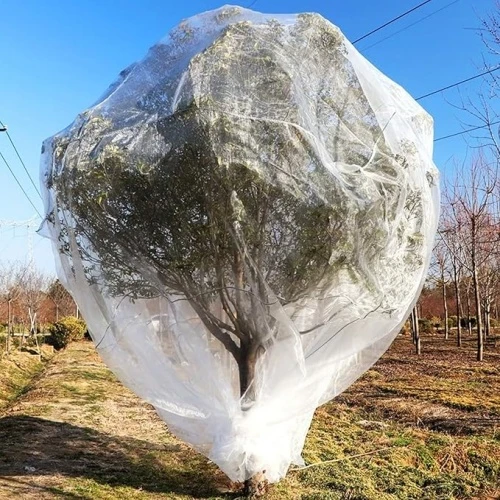-
 Afrikaans
Afrikaans -
 Albanian
Albanian -
 Amharic
Amharic -
 Arabic
Arabic -
 Armenian
Armenian -
 Azerbaijani
Azerbaijani -
 Basque
Basque -
 Belarusian
Belarusian -
 Bengali
Bengali -
 Bosnian
Bosnian -
 Bulgarian
Bulgarian -
 Catalan
Catalan -
 Cebuano
Cebuano -
 China
China -
 Corsican
Corsican -
 Croatian
Croatian -
 Czech
Czech -
 Danish
Danish -
 Dutch
Dutch -
 English
English -
 Esperanto
Esperanto -
 Estonian
Estonian -
 Finnish
Finnish -
 French
French -
 Frisian
Frisian -
 Galician
Galician -
 Georgian
Georgian -
 German
German -
 Greek
Greek -
 Gujarati
Gujarati -
 Haitian Creole
Haitian Creole -
 hausa
hausa -
 hawaiian
hawaiian -
 Hebrew
Hebrew -
 Hindi
Hindi -
 Miao
Miao -
 Hungarian
Hungarian -
 Icelandic
Icelandic -
 igbo
igbo -
 Indonesian
Indonesian -
 irish
irish -
 Italian
Italian -
 Japanese
Japanese -
 Javanese
Javanese -
 Kannada
Kannada -
 kazakh
kazakh -
 Khmer
Khmer -
 Rwandese
Rwandese -
 Korean
Korean -
 Kurdish
Kurdish -
 Kyrgyz
Kyrgyz -
 Lao
Lao -
 Latin
Latin -
 Latvian
Latvian -
 Lithuanian
Lithuanian -
 Luxembourgish
Luxembourgish -
 Macedonian
Macedonian -
 Malgashi
Malgashi -
 Malay
Malay -
 Malayalam
Malayalam -
 Maltese
Maltese -
 Maori
Maori -
 Marathi
Marathi -
 Mongolian
Mongolian -
 Myanmar
Myanmar -
 Nepali
Nepali -
 Norwegian
Norwegian -
 Norwegian
Norwegian -
 Occitan
Occitan -
 Pashto
Pashto -
 Persian
Persian -
 Polish
Polish -
 Portuguese
Portuguese -
 Punjabi
Punjabi -
 Romanian
Romanian -
 Russian
Russian -
 Samoan
Samoan -
 Scottish Gaelic
Scottish Gaelic -
 Serbian
Serbian -
 Sesotho
Sesotho -
 Shona
Shona -
 Sindhi
Sindhi -
 Sinhala
Sinhala -
 Slovak
Slovak -
 Slovenian
Slovenian -
 Somali
Somali -
 Spanish
Spanish -
 Sundanese
Sundanese -
 Swahili
Swahili -
 Swedish
Swedish -
 Tagalog
Tagalog -
 Tajik
Tajik -
 Tamil
Tamil -
 Tatar
Tatar -
 Telugu
Telugu -
 Thai
Thai -
 Turkish
Turkish -
 Turkmen
Turkmen -
 Ukrainian
Ukrainian -
 Urdu
Urdu -
 Uighur
Uighur -
 Uzbek
Uzbek -
 Vietnamese
Vietnamese -
 Welsh
Welsh -
 Bantu
Bantu -
 Yiddish
Yiddish -
 Yoruba
Yoruba -
 Zulu
Zulu
More Language
Feb . 13, 2025 16:59
Back to list
High Quality Farm Shade Net for Agriculture
Innovative farming techniques have transformed agriculture in recent decades, with netting solutions leading the charge. These versatile tools offer groundbreaking advantages for modern agriculture, seamlessly combining traditional farming wisdom with cutting-edge technology.
Industry leaders advocate for the trustworthiness of these nets due to their cost-efficiency and long-lasting durability. A case study involving GreenFields Agro Ltd. showcases a 50-acre apple orchard shielded using eco-friendly nets over a five-year period. The results were staggering a 25% reduction in crop losses compared to the previous decade. Farm owner John Davis lauds the netting system's effectiveness, accentuating its role in boosting the orchard's profitability and ecological footprint. Further, industry workshops and seminars held worldwide illustrate the practical knowledge exchange surrounding netting solutions. These gatherings act as platforms for experts to share robust, hands-on experiences, solidifying nets’ status in modern agriculture. As such, they become critical elements in the collective quest for improving global food security. For farmers emerging into the era of digital agriculture, the deployment of nets can significantly enhance smart farming initiatives. Equipped with IoT sensors, modern nets are not just passive protectors but active contributors to data-driven farming insights. This interaction represents a synergy between agriculture and technology, fueling the agricultural revolution with unprecedented data accuracy and efficiency. In conclusion, nets for agriculture farming are not merely a product; they are a strategic investment into the future of farming. By embodying experience-backed innovations, professional expertise, and authoritative endorsements, these nets present a trustworthy, sustainable, and economically sound option for farmers worldwide. As agriculture continues to evolve towards more sustainable practices, the implementation of netting solutions positions itself as a cornerstone of modern agro-innovation.


Industry leaders advocate for the trustworthiness of these nets due to their cost-efficiency and long-lasting durability. A case study involving GreenFields Agro Ltd. showcases a 50-acre apple orchard shielded using eco-friendly nets over a five-year period. The results were staggering a 25% reduction in crop losses compared to the previous decade. Farm owner John Davis lauds the netting system's effectiveness, accentuating its role in boosting the orchard's profitability and ecological footprint. Further, industry workshops and seminars held worldwide illustrate the practical knowledge exchange surrounding netting solutions. These gatherings act as platforms for experts to share robust, hands-on experiences, solidifying nets’ status in modern agriculture. As such, they become critical elements in the collective quest for improving global food security. For farmers emerging into the era of digital agriculture, the deployment of nets can significantly enhance smart farming initiatives. Equipped with IoT sensors, modern nets are not just passive protectors but active contributors to data-driven farming insights. This interaction represents a synergy between agriculture and technology, fueling the agricultural revolution with unprecedented data accuracy and efficiency. In conclusion, nets for agriculture farming are not merely a product; they are a strategic investment into the future of farming. By embodying experience-backed innovations, professional expertise, and authoritative endorsements, these nets present a trustworthy, sustainable, and economically sound option for farmers worldwide. As agriculture continues to evolve towards more sustainable practices, the implementation of netting solutions positions itself as a cornerstone of modern agro-innovation.
Next:
Latest news
-
Shipping Plastic Bags for Every NeedNewsJul.24,2025
-
Safety Netting: Your Shield in ConstructionNewsJul.24,2025
-
Plastic Mesh Netting for Everyday UseNewsJul.24,2025
-
Nylon Netting for Every UseNewsJul.24,2025
-
Mesh Breeder Box for Fish TanksNewsJul.24,2025
-
Expanded Steel Mesh Offers Durable VersatilityNewsJul.24,2025











